
One of the many ways to speed up Ubuntu system is to use lightweight alternatives of the popular applications.
You have already seen must have Linux applications earlier. Here, let's take a look at the lightweight alternative applications for Ubuntu and other Linux distributions.

Lightweight alternatives to popular Linux applications
Is your Linux system slow? Are the applications taking a long time to open? The best solution for you is to use a lightweight Linux distro.
But it is not always possible to reinstall an operating system, is it?
So if you want to stick to your present Linux distribution, but want improved performance, you should use lightweight alternatives to the applications you are using.
Here, I will put together a list of lightweight alternatives to various popular Linux applications.
Since I am using Ubuntu, I have provided installation instructions for Ubuntu-based Linux distributions. But these applications should work on most other Linux distributions. You have to find a way to install these lightweight Linux tools in your distro.
1. Falkon: Web Browser
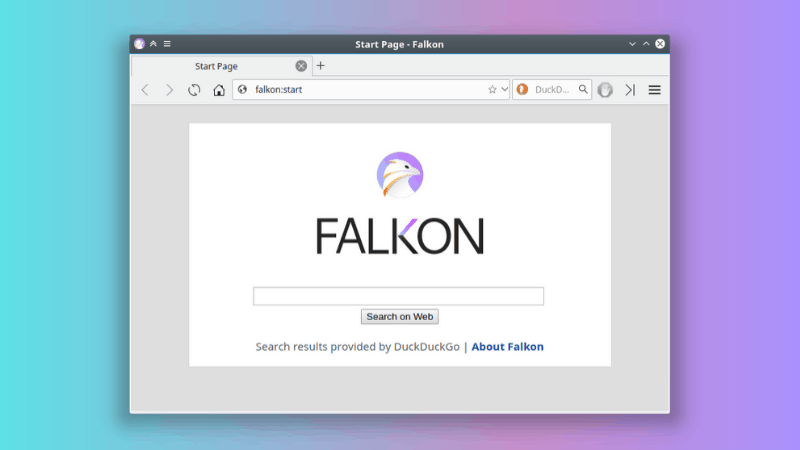
Falkon browser is a KDE project that aims to provide a clean and lightweight browsing experience.
It was previously known as QupZilla and now uses QtWebEngine as its rendering engine.
As a cherry on top, it comes with a built-in AdBlock extension and offers essential options like keyboard shortcuts, password manager, limited extension support, and a few more things.
Installing Falkon in Linux
Midori is available on Ubuntu via the official repository. Just run the following commands for installing it:
sudo apt install falkonYou can also install it via Flatpak or Snap if you have any other Linux distribution installed.
2. Trojitá: email client
Trojitá is an open-source robust IMAP e-mail client. It is fast and resource-efficient. It utilizes Qt to offer a comforting and yet lightweight experience.
It could be one of the best email clients for Linux if you can live with only IMAP support on your e-mail client. And if that is the case, you may not need to look any further.
Trojitá uses various techniques—on-demand e-mail loading, offline caching, bandwidth-saving mode, etc. — for achieving its impressive performance.
Installing Trojitá in Linux distributions
Unfortunately, it does not offer any pre-built binaries. You will have to compile it from the source by following the official instructions.
3. GDebi: Package Installer
Sometimes you need to quickly install DEB packages. Ubuntu Software Center is a resource-heavy application and using it just for installing .deb files may not be a pleasant experience.
Gdebi is certainly a nifty tool for the same purpose that offers a minimal graphical interface.
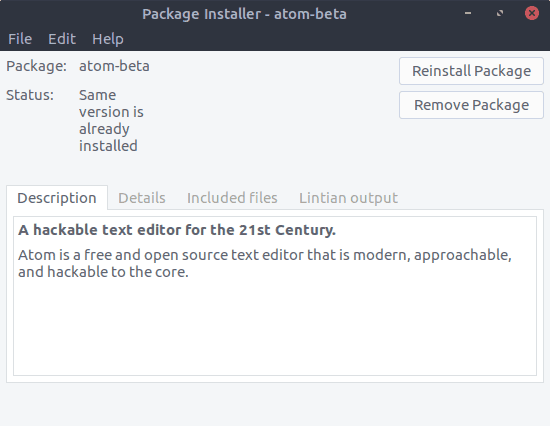
GDebi is totally lightweight and does its job flawlessly. You should even make Gdebi the default installer for DEB files.
Installing GDebi in Ubuntu
You can install GDebi on Ubuntu with this simple one-liner:
sudo apt install gdebi4. App Grid: Software Center
If you use the software center frequently for searching, installing, and managing applications on Ubuntu, App Grid is a must-have application.
It may not have evolved its user experience but it is a fast alternative to the default Ubuntu Software Center.
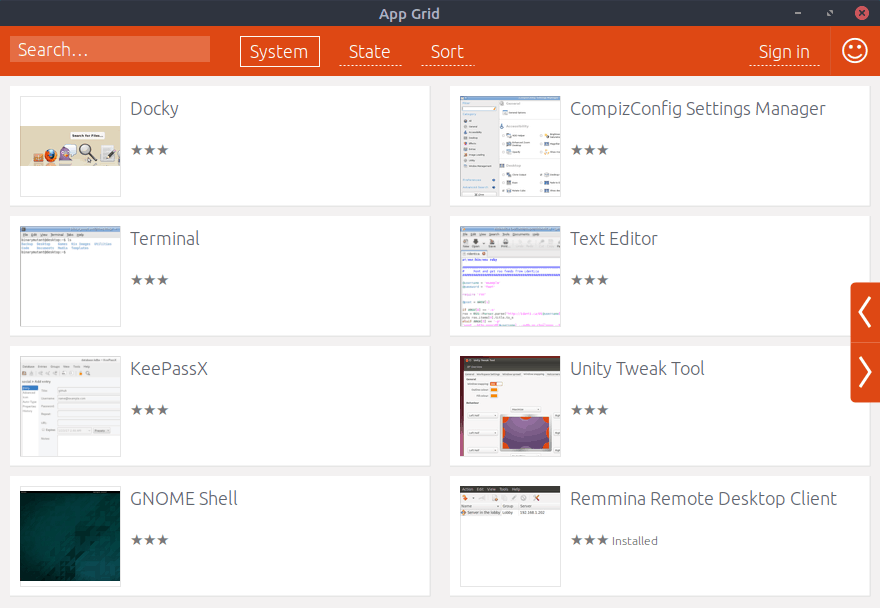
App Grid supports ratings, reviews, and screenshots for applications.
Installing App Grid on Ubuntu based distributions
App Grid has its official PPA for Ubuntu-based distributions. Use the following commands for installing App Grid:
sudo add-apt-repository ppa:appgrid/stable
sudo apt update
sudo apt install appgrid5. Sayonara: Music Player
Sayonara is an elegant music player with essential audio format support and a lightweight user experience. Undoubtedly, one of the best music players for Linux.
While it offers a fast experience, it also lets you customize a lot of things to tweak your experience.
It uses GStreamer as its audio-backend, which ensures that all the major file formats should work as expected.
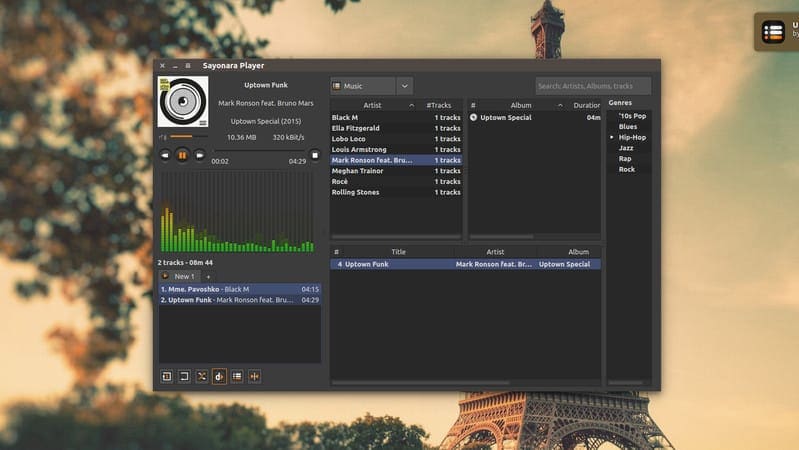
It supports playlists, library management, and several plugins, including an equalizer, spectrum analyzer, and more.
Installing Sayonara in Linux
You will have to install Sayonara on Ubuntu via PPA using the following commands:
sudo apt-add-repository ppa:lucioc/sayonara
sudo apt-get update
sudo apt-get install sayonaraYou also get a Snap package and an AppImage file if you want to install it on any other Linux distribution.
6. Parole Media Player
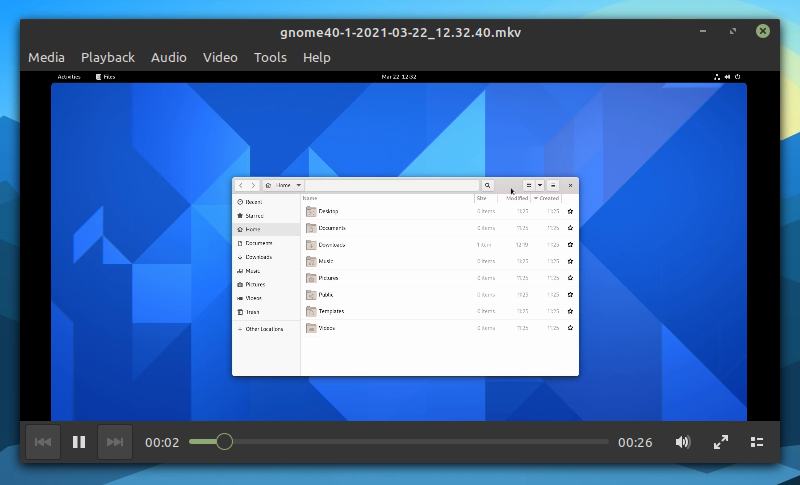
If you are looking for an alternative to VLC Media Player but on the lighter side of things, Parole Media Player will be a great fit. It
Similar to the Sayonara music player, it also utilizes the GStreamer framework to ensure the best compatibility with file formats and codecs.
Distributions like Zorin OS Lite include Parole Media Player out of the box.
It is primarily tailored for Xfce desktop environments but works on other desktops as well.
Installing Parole in Linux
For Ubuntu-based distros, you should find it in the default repository. So, all you need to do is enter the following command in the terminal:
sudo apt install parole7. Thunar: File Manager
Thunar file manager is yet another app originally tailored for the Xfce desktop environment but can be used anywhere else.
You should find all the essential features when compared to other file manager applications like Nemo on Linux Mint.
The user interface is simple and offers a side panel, which you cannot hide (I couldn’t find the option to). It may not offer bookmarking feature, but it provides a fast and useful experience.
Installing Thunar on Linux distributions
Installing Thunar on Ubuntu-based distros will just take one simple command:
sudo apt install thunarYou should also find packages available for your preferred Linux distribution.
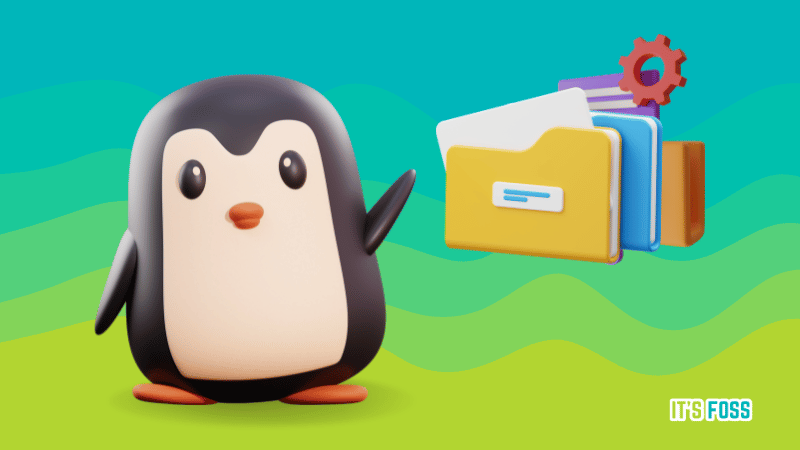
8. Mousepad: Text Editor
Nothing can beat command-line text editors like – nano, vim, etc. in terms of being lightweight.
But if you want a graphical interface, Mousepad is here to the rescue. It’s extremely lightweight and blazing fast. It comes with a simple customizable user interface with multiple themes.
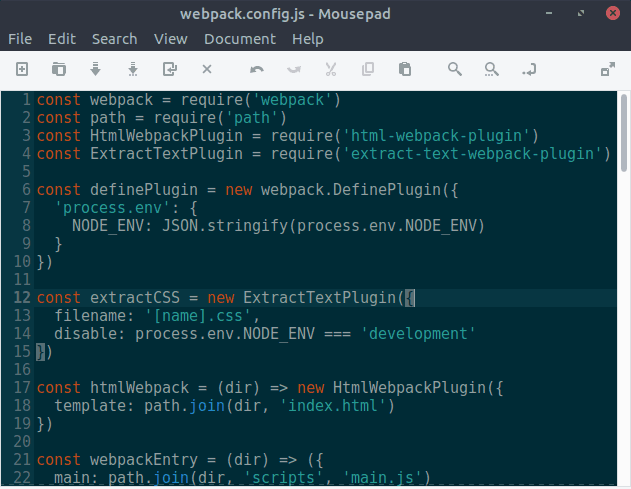
Mousepad supports syntax highlighting. So, you can also use it as a basic code editor. You also have the option to utilize a few plugins to extend the functionality if needed.
Installing Mousepad in Linux
For installing Mousepad, use the following command in the terminal:
sudo apt install mousepad9. GNOME Office: Office Suite
Many of us need to use office applications quite often.
Generally, most office applications take up more storage space and are resource-hungry.
Gnome Office is quite the opposite in that respect. Gnome Office is technically not a complete office suite but it is composed of different standalone applications and among them, AbiWord & Gnumeric stands out.
AbiWord is the word processor. It is lightweight and faster than other alternatives. But that comes at a cost—you might miss some features like macros, grammar checking, etc. It’s not perfect but it works.

Gnumeric is the spreadsheet editor. Just like AbiWord, Gnumeric is also light on resources and provides accurate calculations. If you are looking for a simple and lightweight spreadsheet editor, Gnumeric has got you covered.
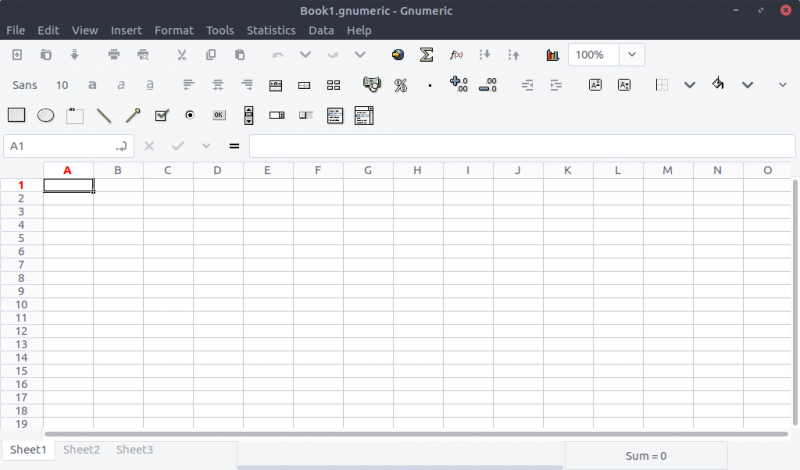
While these two are the key highlights of the collection, you can find the full list of applications in the official Gnome Office wiki.
Installing AbiWord & Gnumeric in Linux
All the tools that are involved with the office suite should be available in the default repositories for most Linux distros. For Ubuntu-based distros, you can type in the following command to install Abiword and Gnumeric:
sudo apt install abiword gnumeric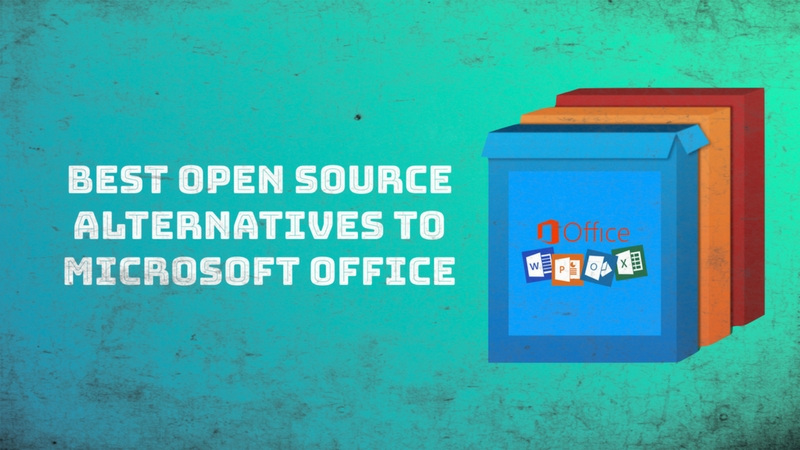
10. GNOME Paint: Drawing Application
GNOME Paint may not be a popular open source paint application but it exists for a long time and is actively packaged for the latest Ubuntu releases.
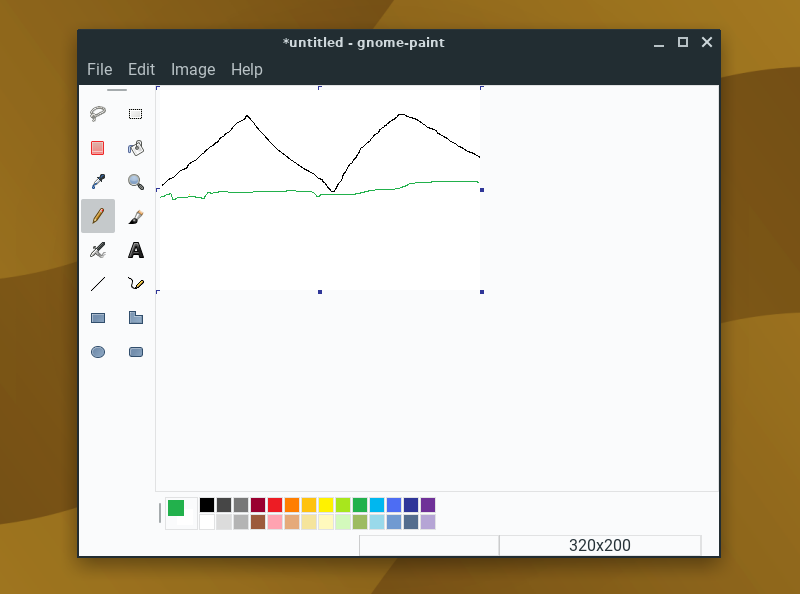
It is a simple paint application without any bells and whistles. You can doodle around using the drawing tool, fill in paint, and do most of the basic tasks easily.
How to Install Gnome Drawing in Linux?
For Ubuntu-based distros, it is available in the default repositories, all you have to do is type in the following command to install it:
sudo apt install gnome-drawingYou should also find it in AUR if you are using Arch or any Arch-based distro.
11. Xfce terminal: Terminal Emulator
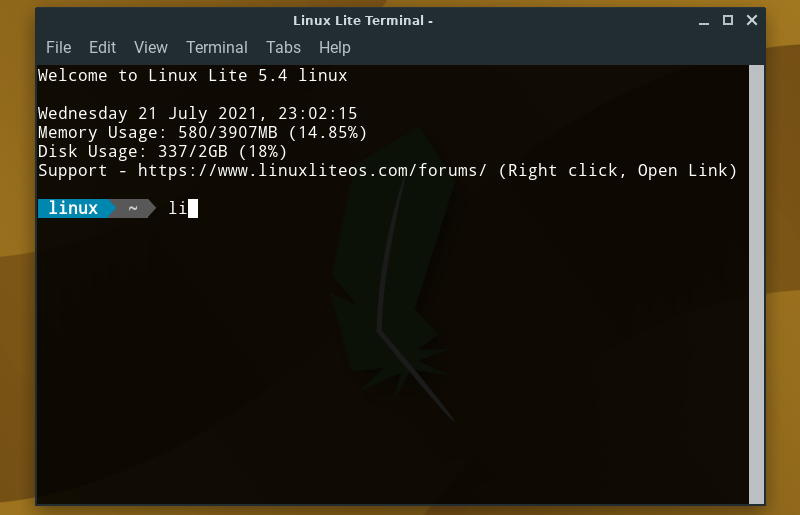
While there are several terminal emulators available for Linux, the Xfce terminal is potentially the lightest of the bunch.
You can also try other terminal emulators that aim to provide a fast experience but for starters, this should do.
The user interface is quite simple and offers essential functions.
How to Install Xfce terminal in Linux?
You should find it available in the default repositories for most of the distributions. To install it using the terminal on Ubuntu-based systems, simply type in the following command:
sudo apt install xfce4-terminal12. Shotwell: Photo Manager
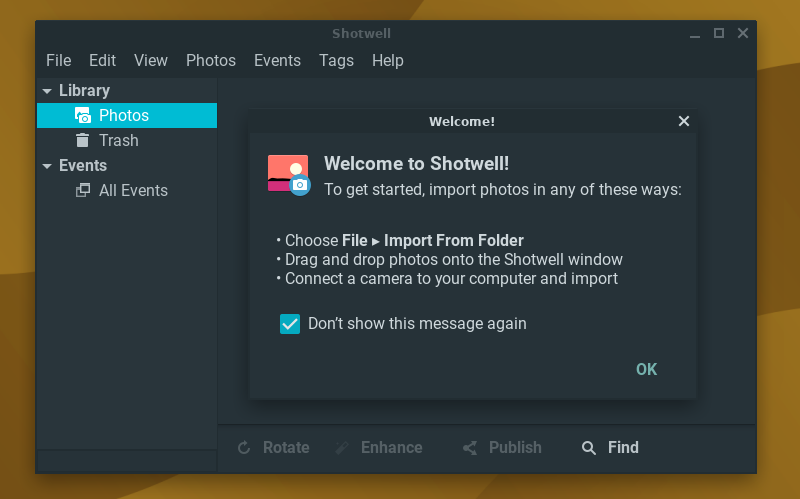
If you have got several photos to manage and fewer system resources to help you do that, Shotwell is your friend.
It is one of the best Linux photo management software available out there with RAW photo support and useful features to help organize your photo collection.
How to Install Shotwell in Linux?
For Ubuntu-based distros, you can easily get it installed using the following command:
sudo apt install shotwellYou should also find it available for Arch Linux (in AUR) and other distributions.
13. Archive Manager GNOME
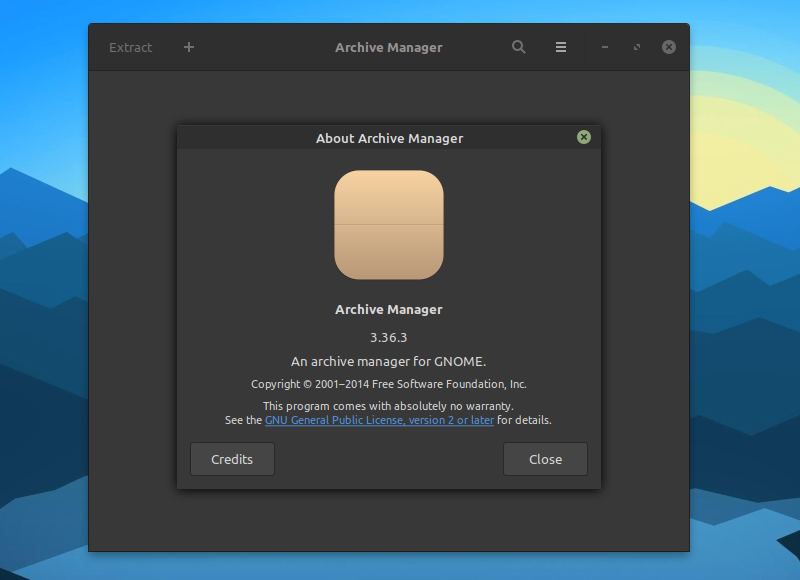
You should already be able to extract and create archives by default on your distribution. And chances are—GNOME’s archive manager is what you have pre-installed.
It supports different file formats and offers some advanced options to tweak.
In case, if you do not have it or if you just want a different standalone archive manager that is lightweight, Archive Manager by GNOME is the perfect option to have.
How to Install GNOME Archive Manager in Linux?
For Ubuntu-based distros, you should be able to find it in the default repositories. All you have to do is type in the command below in the terminal:
sudo apt install file-roller14. Synaptic Package Manager
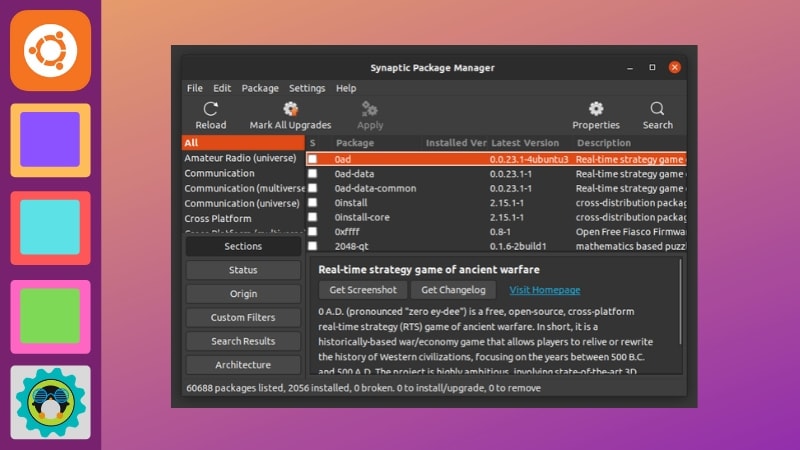
Synaptic Package Manager is an impressive lightweight APT package management software.
It makes it easy to locate, update, find details, and manage package repositories. It may not offer a pleasant user experience but it works fast and is reliable enough.
To know more about it, you can take a look at our article that helps using Synaptic package managing in Linux.
How to install Synaptic in Linux?
You can enable the universe repository on Ubuntu and then proceed to install it with the following command:
sudo apt install synapticIt should be available in the default repositories on other Linux distributions but you can always refer to the official website for instructions on that.
15. Pitvi: Video Editor
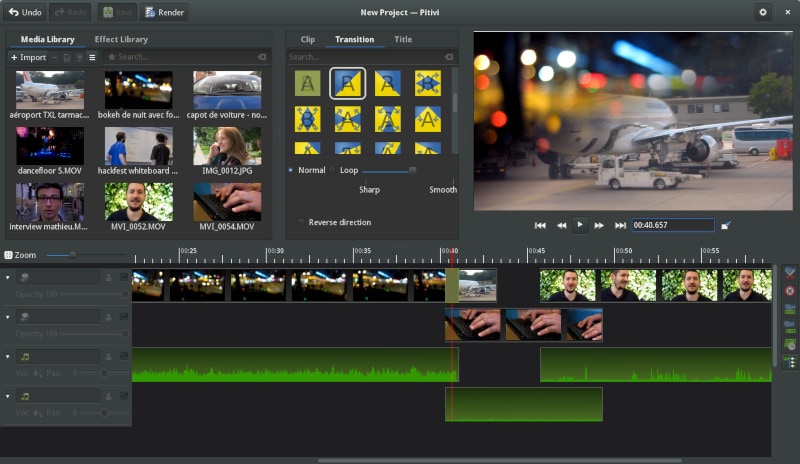
What if you want to edit a video but have a lightweight application to do that?
Pitvi is the answer to that. You get most of the basic functionalities to edit a video. In fact, it is one of the best open source video editing software for Linux.
It may not offer a modern user experience but it is easy to use.
How to Install Pitvi in Linux?
The recommended way of installing Pitvi is through Flatpak as mentioned on their official site.
Unfortunately, it is not available through the repositories. You will have to download the source code if you do not prefer Flatpak packages.


